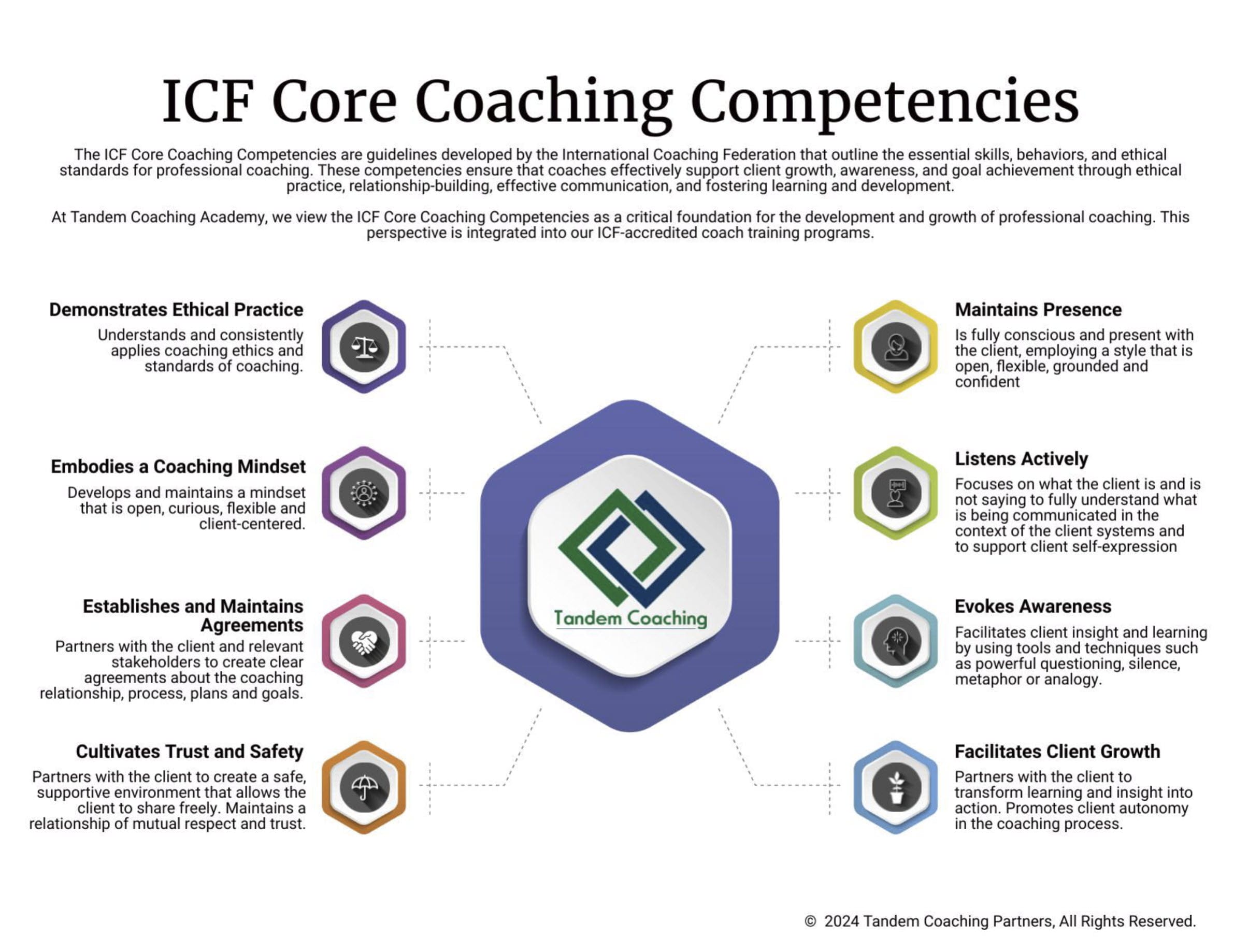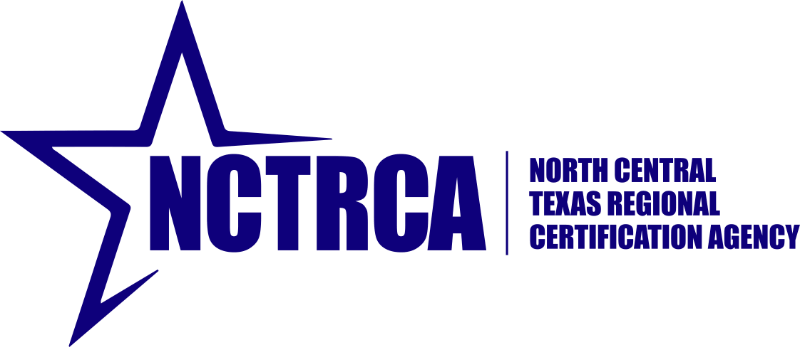In team coaching, maintaining presence is one of the most vital competencies for ICF professional coaches. It requires a balance of attentiveness, emotional intelligence, and adaptability, particularly when managing group dynamics. This article explores how coaches can stay fully conscious and present during team sessions, ensuring each team member feels seen and heard. We will delve into the practical aspects of maintaining presence, such as managing silence, regulating emotions, and actively listening, all while balancing the collective and individual needs of the group.
Key Insights for Mastering Team Coaching Presence
- Balancing Group Dynamics: Learn how to manage both dominant voices and quieter participants to foster a balanced and inclusive environment during team sessions.
- Emotional Regulation Techniques: Discover how mindfulness and grounding exercises can help you remain calm and focused, even in emotionally charged situations.
- Leveraging Silence for Reflection: Understand the strategic use of silence to encourage deeper reflection and more meaningful contributions from team members.
- Developing Active Listening and Empathy: Master the art of fully engaging with team members, both verbally and non-verbally, to build trust and stronger relationships.
- Coaching Presence Through Emotional Intelligence: Explore how emotional intelligence helps you navigate group dynamics and respond effectively to the team’s emotional landscape.
- Ongoing Self-Improvement: Learn the importance of continuous self-reflection and feedback in maintaining and enhancing your coaching presence.
- Formal Training for Advanced Skills: Discover the benefits of structured certification programs like the PCC/ACTC certification to develop and refine your presence in team coaching.
Understanding the “Maintaining Presence” Competency
In team coaching, maintaining presence goes beyond just being physically present—it’s about creating a space where the coach is fully conscious, responsive, and attuned to the needs of both individuals and the group. Imagine a scenario where a team member shares a deeply emotional frustration during a coaching session. The natural reaction for many would be to either quickly offer solutions or shift the conversation to a more comfortable topic. But in that moment, a skilled team coach who is fully present would pause, acknowledge the emotions, and provide space for the team member to further explore those feelings. This conscious choice to “be” rather than “do” is a hallmark of the ICF team coaching presence competency.
In one session, for example, a team struggled with internal conflicts after a failed project. Tensions were high, and emotions ran the gamut from frustration to outright anger. Instead of jumping into problem-solving mode, the coach remained observant, managed their own emotional responses, and let the team members express themselves fully. They used brief moments of silence to allow the group to reflect on their words before diving deeper. The team coach’s presence ensured that no one felt judged or rushed, allowing for a more constructive conversation. This example shows how important emotional regulation is to help a coach remain grounded and available for the team’s needs.
By staying fully engaged and acknowledging the entire emotional landscape of the group, the coach creates an environment where team members can feel safe, seen, and heard—critical aspects of maintaining presence. This helps shift the focus from problems to possibilities and ensures that even the most difficult discussions result in productive outcomes.
Techniques for Maintaining Presence in Team Coaching
One of the most overlooked but powerful techniques for maintaining presence is using silence effectively. Many coaches feel the need to fill every moment with conversation or guidance, but in team coaching, the space between words is often where the magic happens. During one session with a software development team struggling to align their goals, the coach noticed that after asking a thought-provoking question, the team fell silent. Instead of rushing to fill the void, the coach gave them time to sit with their thoughts. This led to a breakthrough as one team member, after several moments of contemplation, finally articulated the root cause of their misalignment—something that hadn’t been clear before. Managing silence in coaching is essential for letting teams process their thoughts more deeply.
In another instance, a coach used silence to encourage reflection after a particularly tense exchange between two team members. The coach didn’t immediately step in to mediate. Instead, they observed the body language and non-verbal cues, allowing the tension to naturally dissipate. This gave the team members the time to self-regulate their emotions, making the eventual discussion far more effective. When the coach finally intervened, it was with a carefully timed question that helped both individuals explore their reactions in a non-judgmental way. This is a prime example of how using silence, combined with active listening and empathy, can transform a difficult conversation into a moment of clarity and growth.
“Silence serves as a bridge to deeper understanding and connection, allowing the client space to internally process their thoughts and emotions.”
Another essential technique is empathic listening. In a coaching session with a marketing team, the coach noticed that one member had become disengaged. While the rest of the team discussed strategies, this individual was quiet and withdrawn. Rather than forcing participation, the coach employed active listening by observing body language and subtle shifts in energy. Later, the coach asked open-ended questions to help the team member express their concerns. This created a safe space for the individual to voice anxieties about upcoming deadlines, which led to a broader conversation on workload management. The coach’s presence and ability to actively listen without jumping to conclusions fostered trust within the group, helping resolve underlying issues that would have otherwise been missed.
By integrating silence, observation, and empathic listening into team coaching sessions, coaches can build deeper connections and facilitate more meaningful discussions. These techniques not only enhance presence but also allow teams to engage more fully with their challenges, ultimately leading to stronger outcomes.
Common Challenges Coaches Face with Presence in Team Coaching
Coaching teams is never as straightforward as coaching individuals. The dynamics of a group introduce unique challenges that can make maintaining presence more difficult, yet even more crucial. Let’s look at a real scenario that highlights some of these challenges.
During a session with a non-profit leadership team, the coach encountered strong emotions after a discussion about budget cuts. One team member expressed frustration over the perceived lack of transparency from senior management, while another was visibly disengaged, barely participating. The challenge here was balancing the strong emotions of some team members while engaging the quieter voices that might otherwise go unheard. This is a situation where navigating strong emotions in group settings becomes critical.
Rather than quickly moving to resolve the conflict, the coach chose to remain present, allowing each person to express their feelings fully. The coach noticed the disengaged team member’s body language—arms crossed, head slightly down—and gently asked an open-ended question: “I see you’re quieter today. How are you feeling about what’s been said?” This approach helped bring the quieter team member into the conversation, allowing them to express their concerns about the impact of budget cuts on their department. The coach’s presence allowed the team to explore all perspectives, not just the loudest voices.
“Presence is not about solving problems immediately; it’s about creating the space for them to be explored.”
In such group settings, the ability to stay emotionally grounded and give everyone the chance to speak is essential for fostering trust and collaboration. The team coach here used both silence and observation to deepen their understanding of the situation. This shows the importance of staying present even when team dynamics become emotionally charged.
Avoiding Burnout While Maintaining Presence
The effort it takes to remain fully engaged with a team for the duration of a session can be exhausting for coaches, particularly when managing complex group dynamics or difficult conversations. Avoiding burnout is essential to ensure you can maintain presence across multiple sessions.
Let’s consider a coach who is working with three different project teams within the same week. Each team presents unique challenges: one group is struggling with internal conflict, another is unclear on their goals, and the third has been disengaged from leadership. After back-to-back sessions, the coach noticed that they felt emotionally drained and less present with the final team of the week. The cause? Burnout, due to not taking adequate time to regulate emotions and restore their own mental energy between sessions.
To avoid burnout, the coach implemented several strategies. First, they began practicing mindfulness between sessions—brief moments of grounding and reflection that allowed them to reset emotionally. Second, they limited the number of sessions per day, ensuring there was enough time between teams to decompress. Finally, they started incorporating self-care practices, such as journaling about their coaching sessions, which helped them process any leftover emotions from previous interactions. These actions allowed the coach to be fully present with each team, ensuring the quality of their coaching didn’t diminish.
By recognizing the early signs of burnout and taking proactive steps, coaches can maintain presence without sacrificing their well-being. This balance is critical for long-term success in team coaching.
By integrating these strategies, coaches can overcome the challenges of managing strong emotions and avoiding burnout, creating a coaching environment that is both supportive and productive for teams.
The Importance of Team Dynamics in Maintaining Presence
Team coaching introduces unique challenges, especially when it comes to balancing the needs of the group with the needs of individual team members. A coach may find that some members dominate the conversation while others retreat into silence, making it difficult to maintain a cohesive flow. This is where the coach’s ability to balance group needs with individual focus becomes critical.
Consider a scenario where a marketing team is struggling to align their strategy. During a session, the more extroverted members dominate the conversation, while a few introverted participants remain quiet. The coach, fully present, notices the imbalance and asks a pointed question: “I’m curious to hear from those who haven’t shared yet—what’s your take on our direction?” This approach gives quieter members a voice, ensuring that the session captures a broad range of perspectives.
In another instance, a team was tasked with developing a new product, but internal conflicts over leadership roles hindered progress. The coach remained attuned to the dynamics and facilitated a dialogue that allowed each person to share their concerns without interruption. By giving equal attention to each team member and managing the group’s energy, the coach enabled them to reach a compromise that honored both individual contributions and the collective goal. This demonstrates how a coach’s presence helps teams navigate complex dynamics.
“Balancing the needs of the individual and the group is an art. It’s about knowing when to focus on each and creating space for everyone to feel heard.”
By staying attuned to the flow of the conversation, coaches ensure that quieter voices aren’t lost and that dominant voices don’t overshadow the collective progress. This approach fosters a more inclusive, productive environment for team coaching sessions.
Co-Regulation: Managing Emotional Energy in Teams
Co-regulation, the process of managing and balancing emotional energy between people, plays a significant role in maintaining presence in team coaching. When a team experiences tension or high emotions, it’s easy for those feelings to spread throughout the group, making it challenging to stay focused on the task at hand. The coach’s role here is to help regulate the group’s emotional energy by modeling calmness, empathy, and curiosity.
For example, in a coaching session with a healthcare team struggling under the pressure of increased patient loads, emotions ran high as team members expressed frustration over a lack of resources. Rather than jumping in to solve the problem immediately, the coach stayed calm, allowing the team to fully express their concerns. By maintaining their presence and calmly guiding the conversation, the coach helped the team move from a place of frustration to a space of problem-solving. This ability to co-regulate the team’s emotional state was crucial in helping them transition from emotional venting to constructive dialogue.
Another scenario involved a software development team dealing with the stress of a missed project deadline. The coach noticed that the team was anxious and defensive, with accusations being thrown back and forth. The coach stepped in, acknowledging the group’s collective stress, and then used silence and reflection to help the team pause. By modeling emotional regulation, the coach created a safe environment where the team could step back, reassess, and come up with actionable steps to move forward.
“In moments of heightened emotion, the coach’s ability to stay grounded helps the team recalibrate their emotional energy, allowing for more productive conversations.” — Tandem Coaching
Co-regulation is a powerful tool for coaches working with teams. By maintaining presence and offering calm guidance, coaches can help teams manage their emotional energy, ensuring that the group remains focused and productive, even during times of stress.
Creating a Safe Environment for Team Coaching
A crucial aspect of maintaining presence in team coaching is creating a space where each team member feels safe to contribute without fear of judgment or dismissal. This environment allows for open communication, vulnerability, and growth. As coaches, the ability to foster trust among the group is paramount, especially when facilitating teams with diverse backgrounds, experiences, and opinions.
Consider a session with a newly formed project team. At the start of the meeting, the coach noticed that several team members seemed hesitant to share their thoughts. Sensing this, the coach made an effort to openly acknowledge the tension, saying, “I can sense that some of you might be unsure about speaking up. It’s important to remember that this space is for exploration, without any expectations of being right or wrong.” By addressing the discomfort and naming it, the coach effectively diffused the pressure and set the tone for a judgment-free environment.
This approach of creating a safe environment for team coaching allowed each participant to relax, knowing their input would be valued. As the session progressed, even the quieter team members began to voice their ideas. The coach’s presence and the space they created gave them the confidence to speak freely, resulting in a richer, more balanced conversation.
“A team functions best when every member feels safe enough to contribute fully. This requires trust, patience, and most importantly, presence.”
Establishing this sense of safety also extends beyond verbal cues. Non-verbal signals, like maintaining eye contact, open body language, and giving adequate pauses for reflection, contribute to making team members feel heard. In high-stress situations, where team members may feel the need to defend themselves or their ideas, the coach can act as a neutral party, redirecting conversations back to collaboration rather than competition.
Developing Your Presence as a Team Coach
Presence, while often considered intangible, can be consciously developed with deliberate practice and reflection. To truly embody this competency, coaches must engage in continuous self-improvement and awareness. One of the most effective methods for developing presence is through self-reflection and feedback, allowing coaches to identify areas where they may have struggled to maintain focus or balance during a session.
In one case, a coach working with a financial services team found that their attention was drifting during a particularly dry technical discussion. Recognizing this, the coach made a note of the moment and later reflected on why their presence waned. They realized that their own discomfort with technical jargon had caused them to disconnect. Armed with this awareness, the coach sought mentorship from a colleague with more experience in that area, eventually becoming more comfortable and engaged in such discussions.
Coaches can also develop their presence through structured mindfulness practices. One coach, for instance, began each team session with a short breathing exercise to center themselves, ensuring that they started from a place of calm. This practice allowed the coach to be fully available to the team, even during heated moments or when distractions were present.
“Presence isn’t about perfection; it’s about being aware of when you’ve disconnected and bringing yourself back.”
By continually reflecting on their own emotional state and mental focus, coaches can ensure they bring their best selves to every team session. Regular feedback from both clients and peers also provides invaluable insights, helping coaches fine-tune their approach to maintaining presence.
Continuous Learning and Emotional Intelligence
To maintain a strong coaching presence, a coach must continually enhance their emotional intelligence and adapt to the evolving needs of the team. Emotional intelligence allows coaches to not only manage their emotions but also attune to the unspoken feelings and reactions within a team. This is crucial when guiding teams through challenges like conflict resolution or navigating high-stakes decisions.
Take the case of a leadership team in a fast-growing tech startup. The team was struggling with significant stress as they attempted to meet ambitious deadlines. The coach noticed that the CEO was showing signs of frustration, repeatedly interrupting team members and steering the conversation back to their own priorities. Rather than addressing the CEO’s behavior directly, the coach used their emotional intelligence to assess the root of the frustration—unmet expectations and overwhelming pressure. The coach gently redirected the conversation by asking open-ended questions, such as “How do you feel these concerns align with the team’s overall goals?” This shift in focus allowed the CEO to express their frustrations without dominating the discussion, helping the team move forward.
By leveraging emotional intelligence, coaches can create space for team members to express themselves while keeping the conversation constructive. Regular self-reflection and development are key to honing these skills. Coaches can participate in continuous learning and emotional intelligence development through mentorship, attending workshops, or engaging in peer coaching circles.
“Emotional intelligence is the cornerstone of presence. A coach who understands both their own emotions and the emotions of the team can guide more impactful conversations.”
To grow emotional intelligence, many coaches incorporate mindfulness practices or reflective journaling into their routines. One coach, for instance, started ending each day by noting moments when their presence faltered—whether due to distractions or emotional triggers. By reflecting on these moments, they could identify patterns and take proactive steps to improve their emotional regulation in future sessions.
Practical Exercises for Enhancing Presence
Enhancing presence in team coaching doesn’t happen by chance. Coaches need to engage in regular practical exercises that help develop their ability to remain grounded, focused, and available to their teams. One effective strategy is mindfulness practice, which can be as simple as starting a session with a brief breathing exercise to center attention.
A coach working with a non-profit team under considerable budget constraints found that the sessions often became heated, with emotions running high as the team struggled to make difficult decisions. Before one particularly intense meeting, the coach invited the team to engage in a short breathing exercise. This moment of stillness helped settle the group’s nervous energy, allowing for a more focused, productive conversation. The practice of mindfulness not only benefits the coach but also creates a more calm and centered environment for the entire team. This is just one way that mindfulness techniques for team coaches can make a tangible difference.
Another effective practice is body awareness. By being conscious of their own body language, coaches can project a calm, open stance that invites trust. In one instance, a coach noticed that during difficult feedback discussions, they tended to cross their arms—a non-verbal cue that unintentionally signaled defensiveness. After becoming aware of this through video reviews of their sessions, the coach made a conscious effort to maintain open, relaxed body language, which helped the team feel more at ease during these conversations.
“Presence is embodied. When coaches are physically relaxed and mindful, it sets the tone for the entire team.” — Tandem Coaching
Additionally, regular supervision and mentoring can be a valuable resource for improving coaching presence. Coaches benefit from discussing their experiences with peers and mentors, who can offer fresh perspectives and constructive feedback. This kind of professional reflection is essential for ongoing development and ensures that a coach’s presence remains impactful.
Integrating Presence into Your Coaching Practice
Once presence is developed through training and experience, the next challenge is embedding this skill into everyday coaching practice. The key to this lies in consistency—ensuring that every session is approached with the same level of focus and attention to detail, regardless of the team’s mood or challenges.
Let’s look at the example of a coach working with a diverse team of executives from different departments within a global organization. In the initial meetings, the team was disengaged, with several members expressing doubt about the coaching process. The coach, equipped with tools learned from a formal team coaching program, focused on maintaining their presence by employing active listening and creating space for silence. They asked thoughtful, open-ended questions to ensure each participant felt included in the conversation, using moments of silence to allow deeper reflection.
By the end of the coaching engagement, the team’s dynamics had shifted dramatically. The executives, once skeptical, began to see the value in exploring their thoughts and ideas through coaching. The coach’s consistent presence throughout the sessions helped build trust, allowing the group to engage more openly. This demonstrates how embedding presence into your coaching practice can turn initial resistance into meaningful collaboration.
To maintain presence long-term, coaches should commit to regular self-reflection. Journaling after sessions, for example, can help coaches identify areas where their focus may have faltered. Additionally, seeking feedback from peers or mentors offers an external perspective, highlighting blind spots that might otherwise go unnoticed. Through these ongoing efforts, coaches can ensure they remain fully engaged in each session, creating a lasting impact on their teams.
By making presence a consistent focus, coaches help foster environments where teams can thrive, no matter the challenges they face.
Conclusion: Elevating Your Coaching Presence
As you continue your journey in team coaching, maintaining presence is one of the most critical competencies to master. This skill isn’t just about being physically there—it’s about fostering an environment where team members feel heard, valued, and supported. Presence allows a coach to manage emotional dynamics, balance individual and group needs, and guide the team towards meaningful collaboration. Whether it’s through active listening, mindful silence, or emotional intelligence, presence is the foundation that supports every successful coaching interaction.
Key Takeaways for Maintaining Presence in Team Coaching
- Emotional Regulation: A coach’s ability to stay calm and composed is crucial for handling high-stress situations or emotional conversations. Techniques like mindfulness and grounding exercises can help you remain present, even in the most intense moments.
- Active Listening and Empathy: Maintaining presence means fully engaging with what’s being said, both verbally and non-verbally. Demonstrating empathy by acknowledging each team member’s contributions helps build trust and strengthens relationships.
- Managing Silence: Strategic use of silence allows space for reflection and deeper insights, helping teams to process their thoughts more effectively.
- Balancing Group Dynamics: A coach’s presence is needed to manage both dominant voices and quieter participants, ensuring that the session remains balanced and inclusive.
By embedding these practices into your coaching sessions, you’ll not only become a more effective coach but also create an environment where teams can thrive.
“Presence is the art of being fully conscious and engaged with the team, helping them navigate through challenges while maintaining a space of trust and collaboration.”
If you’re looking to take your coaching presence to the next level, consider joining the PCC/ACTC certification program. Through structured training, guided practice, and mentorship, you’ll gain the tools you need to excel as a team coach. This program will help you master essential competencies like maintaining presence, navigating group dynamics, and fostering trust within teams.
Ready to elevate your coaching career? Apply now to join the next cohort and start developing your skills to become an even more impactful coach.
FAQs About Active Listening in Team Coaching
What does maintaining presence in team coaching mean?
Maintaining presence in team coaching refers to the coach’s ability to stay fully engaged, conscious, and responsive throughout the session. It involves being emotionally available, managing group dynamics, and fostering a safe, non-judgmental environment. This allows each team member to feel heard and supported, which leads to more productive conversations and outcomes.
Why is emotional regulation important in team coaching?
Emotional regulation is crucial because it helps the coach remain calm and composed, even when tensions are high. Teams often experience strong emotions during coaching sessions, and a coach’s ability to stay grounded enables them to guide the team constructively. By using emotional regulation in team coaching, coaches help maintain focus and ensure that conversations don’t spiral into unproductive arguments.
How can silence be used effectively in team coaching sessions?
Silence is a powerful tool in coaching. When used intentionally, it gives team members the space to reflect on their thoughts before speaking. This can lead to deeper insights and more thoughtful contributions. Coaches can learn to manage silence in team coaching sessions to allow for reflection, giving the team time to explore ideas more fully.
What are some strategies for balancing group needs with individual focus in team coaching?
A key strategy is to actively listen and encourage participation from all team members, ensuring that quieter voices are heard. Coaches can ask open-ended questions to bring in perspectives from those who may not have spoken yet. Balancing group needs with individual focus also involves managing dominant participants to keep the conversation inclusive.
How does formal certification like PCC/ACTC improve a coach’s presence?
Formal training through programs like the PCC/ACTC certification offers structured learning, mentorship, and practical application that helps coaches refine their presence. It provides a comprehensive framework for managing team dynamics, emotional intelligence, and creating a safe environment, all essential for effective team coaching.
Can maintaining presence help manage conflicts in a team?
Yes, maintaining presence helps a coach navigate conflicts by staying emotionally grounded and neutral. By using techniques like active listening, empathy, and reflection, coaches can help teams move past emotional triggers and focus on collaborative solutions. This ability to stay present prevents conflicts from escalating and facilitates more constructive dialogue.
What are some practical exercises for improving coaching presence?
Coaches can practice mindfulness techniques, such as breathing exercises or reflective journaling, to enhance their presence. Regular self-reflection after coaching sessions, where coaches evaluate their focus and emotional engagement, also helps. These practices are vital for improving active listening and empathy in team coaching.
How can team coaches manage strong emotions during a session?
Coaches should acknowledge the emotions without rushing to fix the situation. This can involve naming the emotions in the room and giving space for team members to process their feelings. Emotional regulation techniques, such as pausing or encouraging silent reflection, are key to managing strong emotions in group settings effectively.
What role does emotional intelligence play in maintaining presence?
Emotional intelligence helps coaches recognize and respond to both their own emotions and those of the team. It is essential for staying empathetic and managing group dynamics. Coaches with high emotional intelligence can navigate tension, encourage vulnerability, and maintain a calm and supportive atmosphere, critical for developing presence in team coaching environments.
What is the most important takeaway for coaches looking to improve their presence?
The most important takeaway is that presence is not a one-time achievement; it’s a skill that requires continuous self-reflection, practice, and development. Coaches should focus on building emotional intelligence, active listening, and mindfulness techniques to enhance their ability to stay engaged and effective in every session.

Unlock Your Coaching Potential with Tandem!
Dive into the essence of effective coaching with our exclusive brochure, meticulously crafted to help you master the ICF Core Coaching Competencies.
"*" indicates required fields
About the Author
Cherie Silas, MCC
She has over 20 years of experience as a corporate leader and uses that background to partner with business executives and their leadership teams to identify and solve their most challenging people, process, and business problems in measurable ways.













